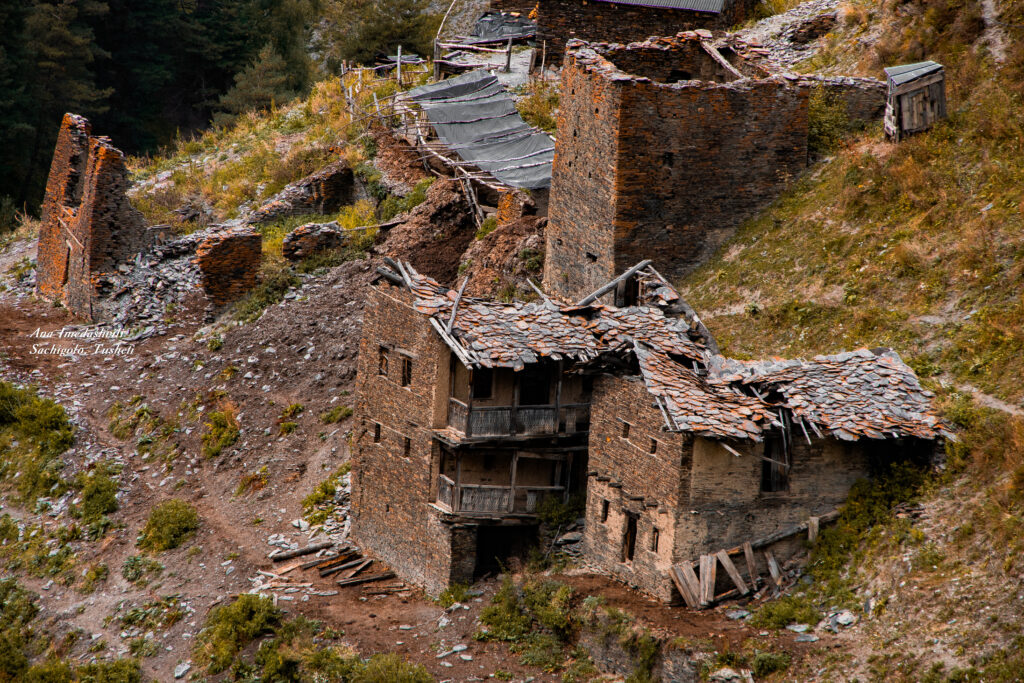The United Kingdom of Colors: Ethnographic Treasures
Since time immemorial, on the lands of Akhmeta, the Nature and the Human have lived in perfect harmony, seamlessly blending the lifestyles of the highlands and the lowlands. Alongside the indigenous Kakhetian population, various ethnic groups that settled in the region coexisted in balance, bringing with them their unique customs and cultures. This dynamic grew particularly strong in the 19th century, during the widespread and spontaneous migrations of peoples across the Caucasus. Many ethnic groups, seeking refuge from the harsh mountain terrain, found a home in Akhmeta, enriching this corner of Kakheti with a vibrant new ethnic tapestry. This interplay of contrasts fostered the creation of a living, breathing ethnographic treasure—a folk art steeped in individuality. Today, Akhmeta is not only home to tangible heritage etched in stone but also to an equally priceless intangible legacy: traditions, customs, oral lore—poems, prayers, legends, and hymns dedicated to sacred icons. Tushetian folklore comes alive in ballads, melodies, music, songs, and dances. Community traditions such as games, festivals, and sacred feasts thrive, alongside the unique traditions of sheep herding, diverse cuisine, and, of course, the art of winemaking. This distinctive intangible heritage allows anyone who sets foot on the soil of Akhmeta, to not merely observe its historical monuments and breathtaking landscapes but also to become an active participant in its centuries-old, untouched culture. A visit to Akhmeta offers the opportunity to experience, feel, and take home a piece of its spirit forever.

Ethnography Preserved in Museums
Akhmeta Municipality is home to three museums, each offering a vivid glimpse into the region’s ethnographic treasures and the cascade of folk art developed here. Akhmeta Museum of Local Lore is housing over 17,000 exhibits and preserves artifacts from across the municipality, including rare ethnographic materials from remote villages, household items, woven carpets, Tushetian attire, and accessories. Pankisi Ethnographic Museum in the village of Duisi showcases archaeological and ethnographic artifacts that vividly depict the unique spirit and lifestyle of diverse communities living in the Pankisi Gorge. Village of Kistauri boasts the Rapiel Eristavi House-Museum. This residence, located in a small Kakhetian village, captures the essence of the transformative 19th century. Rapiel Eristavi, a distinguished native of Akhmeta, was a national poet, playwright, historian, and ethnographer whose artistic and scholarly works left an indelible mark on Georgian literature and society. His home served as a gathering place for literary enthusiasts and such grand names of Georgian literature, as Ilia Chavchavadze, Akaki Tsereteli, and Alexander Kazbegi. The house hosted poetry readings, folk song evenings, and lively improvisational performances, leaving a profound cultural imprint on the region. Today, the museum’s exhibits and atmosphere continue to pulse with the creative energy and folk artistry that once made Kistauri a vibrant center of Georgian culture.

In the Beginning Was the Word: Oral Traditions
On the lands of Akhmeta, nestled between the sprawling meadows of the Alazani Valley and the snow-capped peaks of the Caucasus, alongside the indigenous Georgian language, resonated other voices in harmony, Tsova-Tush language (Bats language), Kist speech (a dialect of Chechen), Tushetian dialect, Ossetian, and many other intertwined tongues and accents. These languages echoed like bells, creating a vibrant oral tradition that told the story of the land’s history in countless forms and mediums. Prayers, incantations, ritual laments—both pagan and Christian—hymns to sacred icons, legends of giants, mythical creatures, and heroes have been preserved to this day, alive in voice and memory. This oral world, however, would not be complete without transforming into haunting melodies and evocative folk songs that have defined the region’s soul for centuries. Today, these unique melodies are preserved by the region’s folklore ensembles, cultural houses, and music schools. But for centuries, these songs were an integral part of Akhmetian family life, passed down from generation to generation. Elders would gather on wooden-woven balconies or around central fires in the villages, singing soulful ballads or, conversely, fiery tunes. Girls and boys would dance around the fire, and then the evening would culminate in the enchanting sounds of the Panduri (Traditional Georgian three-string instrument). Along with the musical scores this magical instrument could imitate the march of an army during an enemy invasion, the sound of weeping, or the playful notes of joy. It is said that Panduri could even mimic the sounds of ‘capture of Shamil’, famously described as ‘Shamil laments.’ The imitation of these sounds could be also performed on the chianuri, while the shepherd’s solitude or melancholic tales were mostly expressed through Salamuri (flute) or Stviri (pipe). In Tusheti, the echoing mountains carried the sound of the Garmoni (accordion), an instrument that Tushetian women virtuously paired with their folk songs. Further down, in the villages of Pankisi, Kists sang deep, baritone heroic songs and played the three-stringed Chechen Fondar. Meanwhile, in the villages near the banks of the Alazani, the polyphonic Mravaljamieri (traditional Georgian celebratory song) would rise, spreading first over the lands of Akhmeta and then across the entire country, resonating as an eternal voice of life itself.